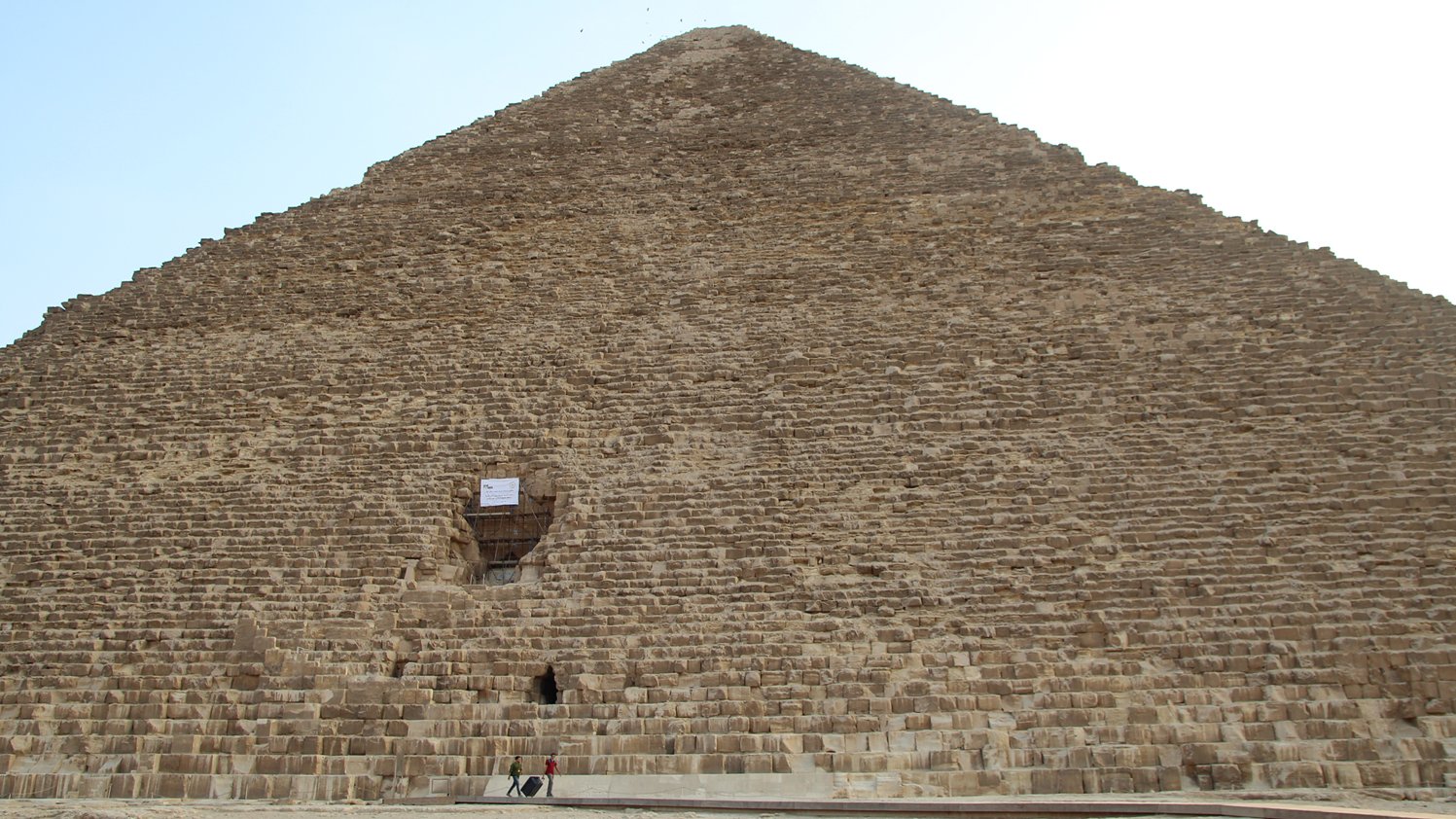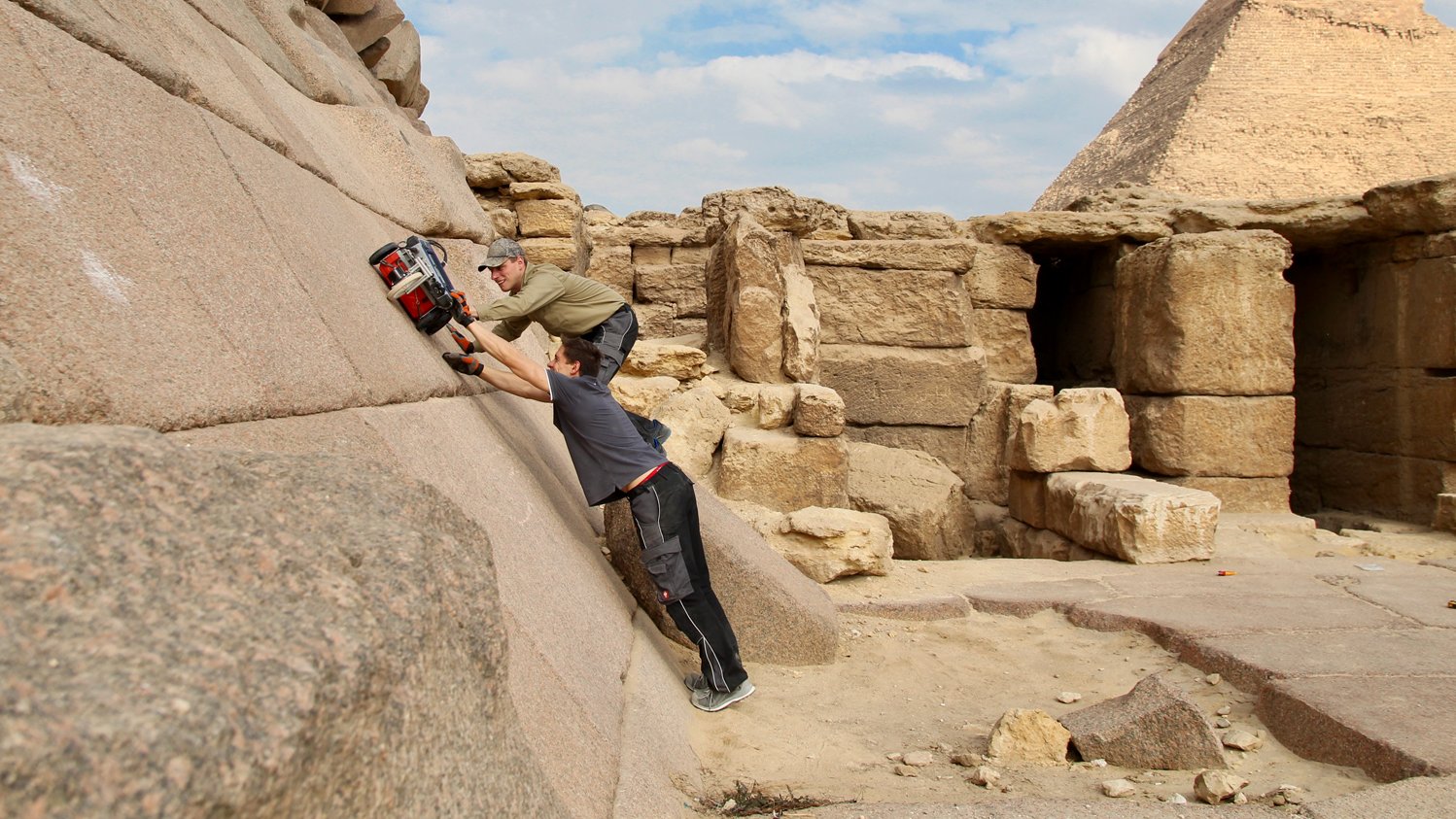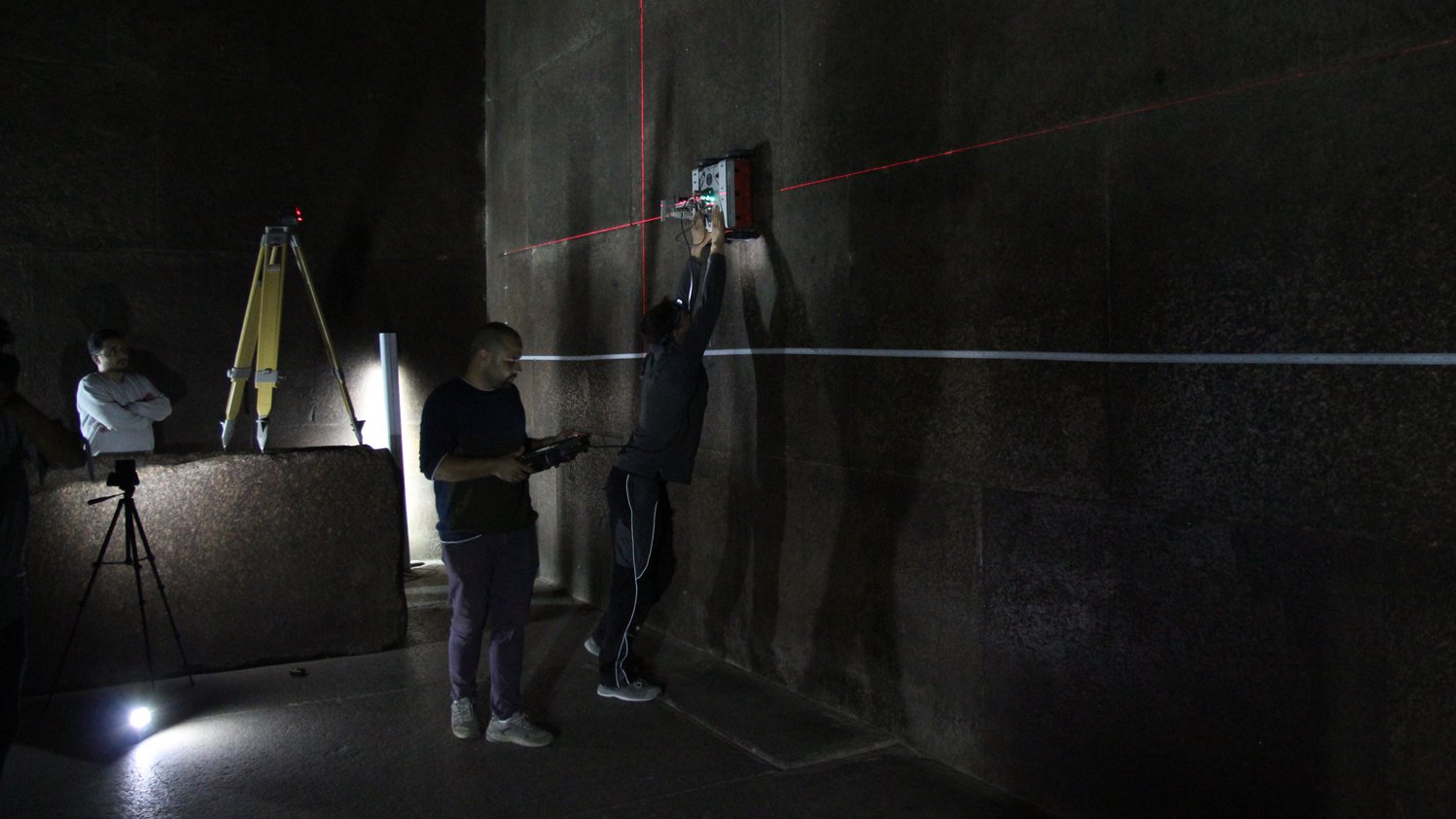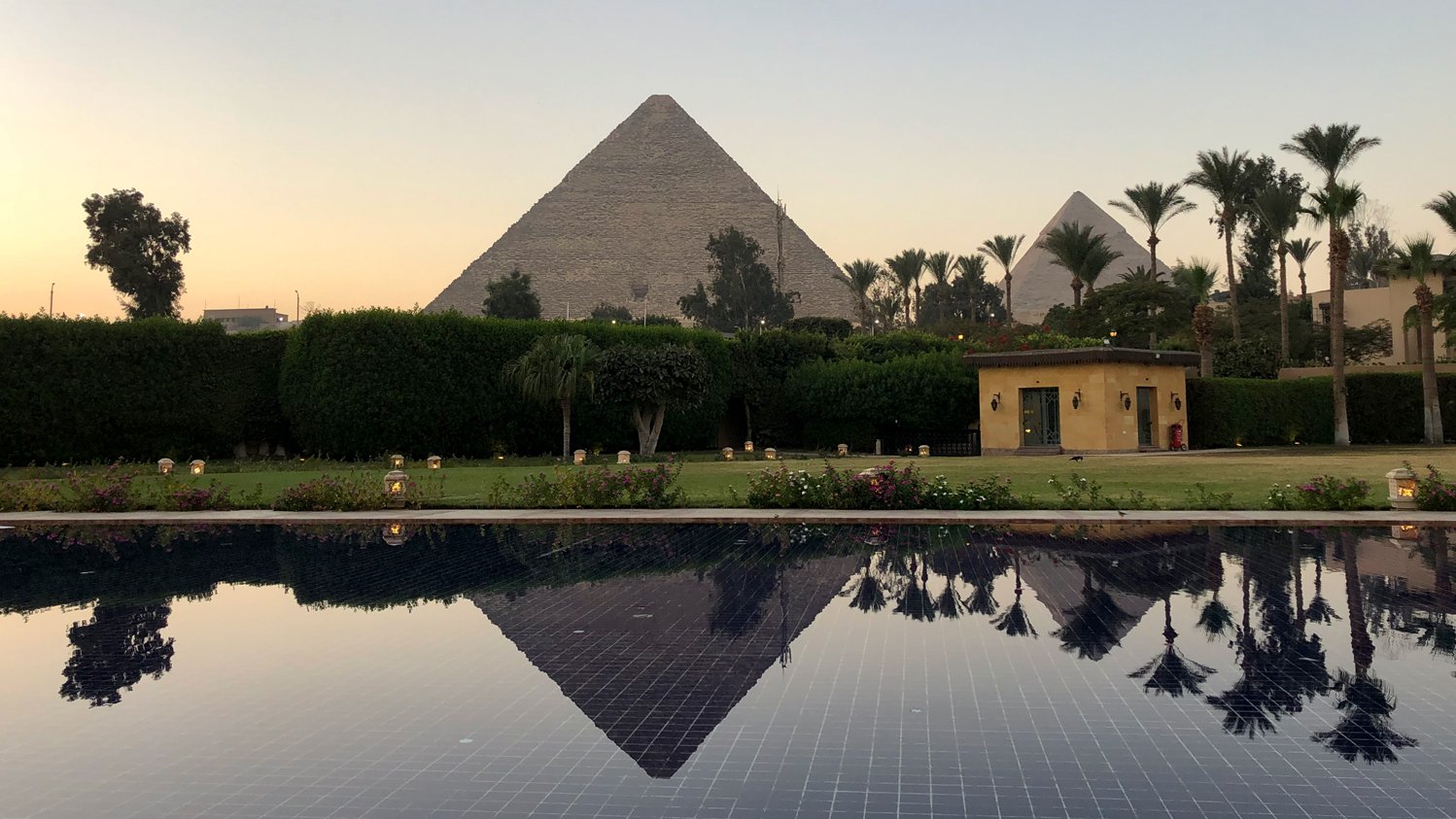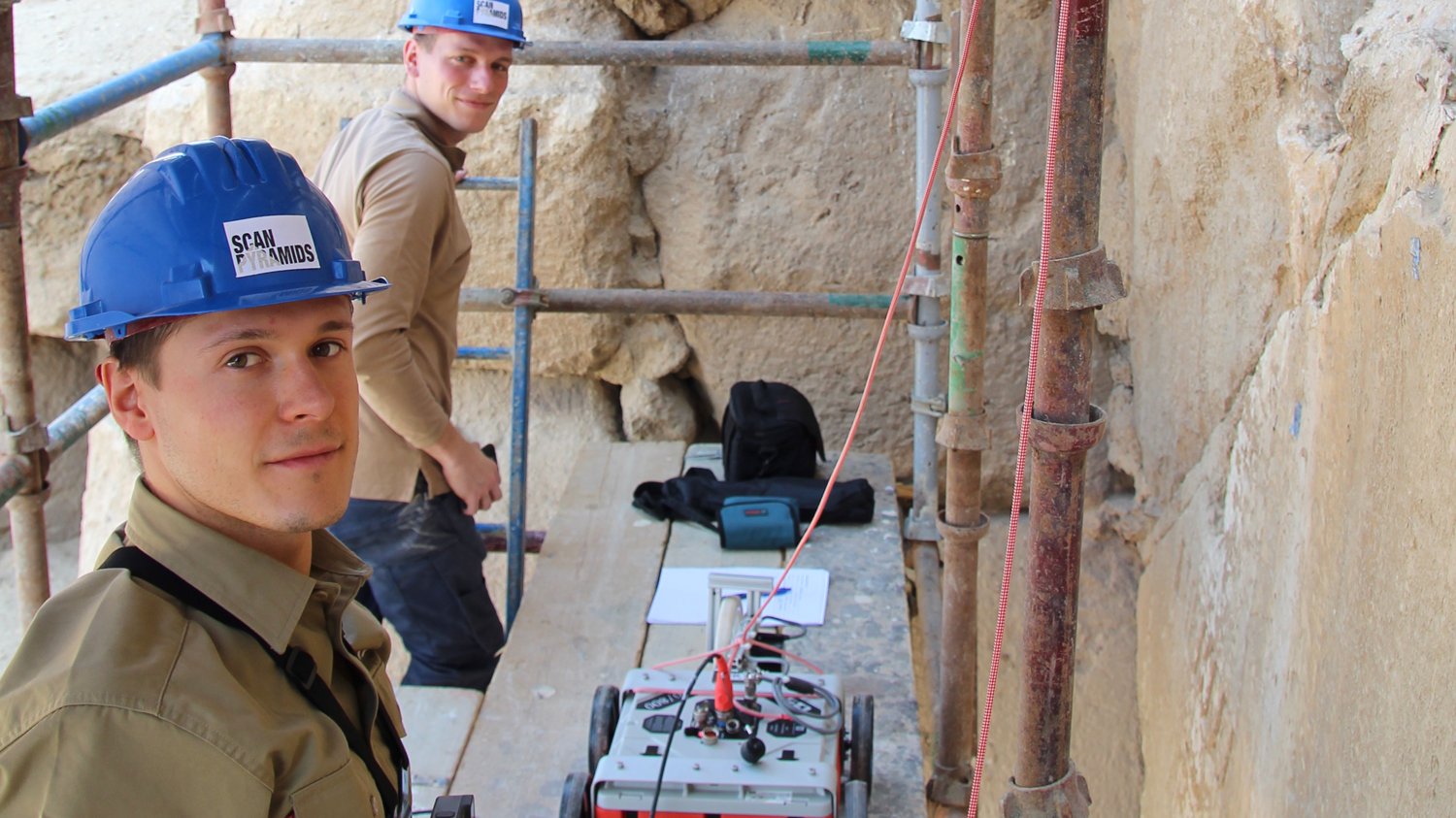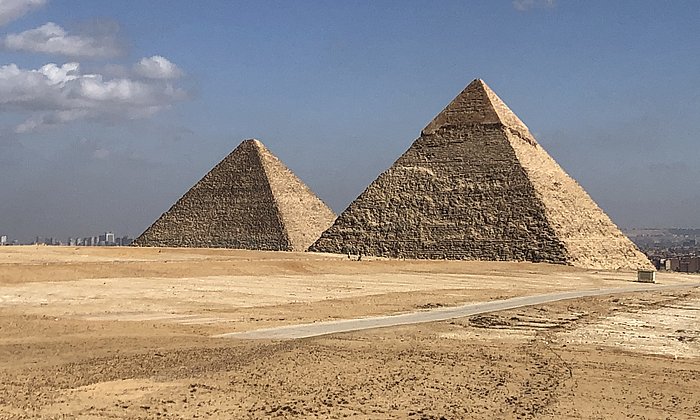Geophysics doctoral student Johannes Scherr reports from Egypt
View inside the Cheops Pyramid
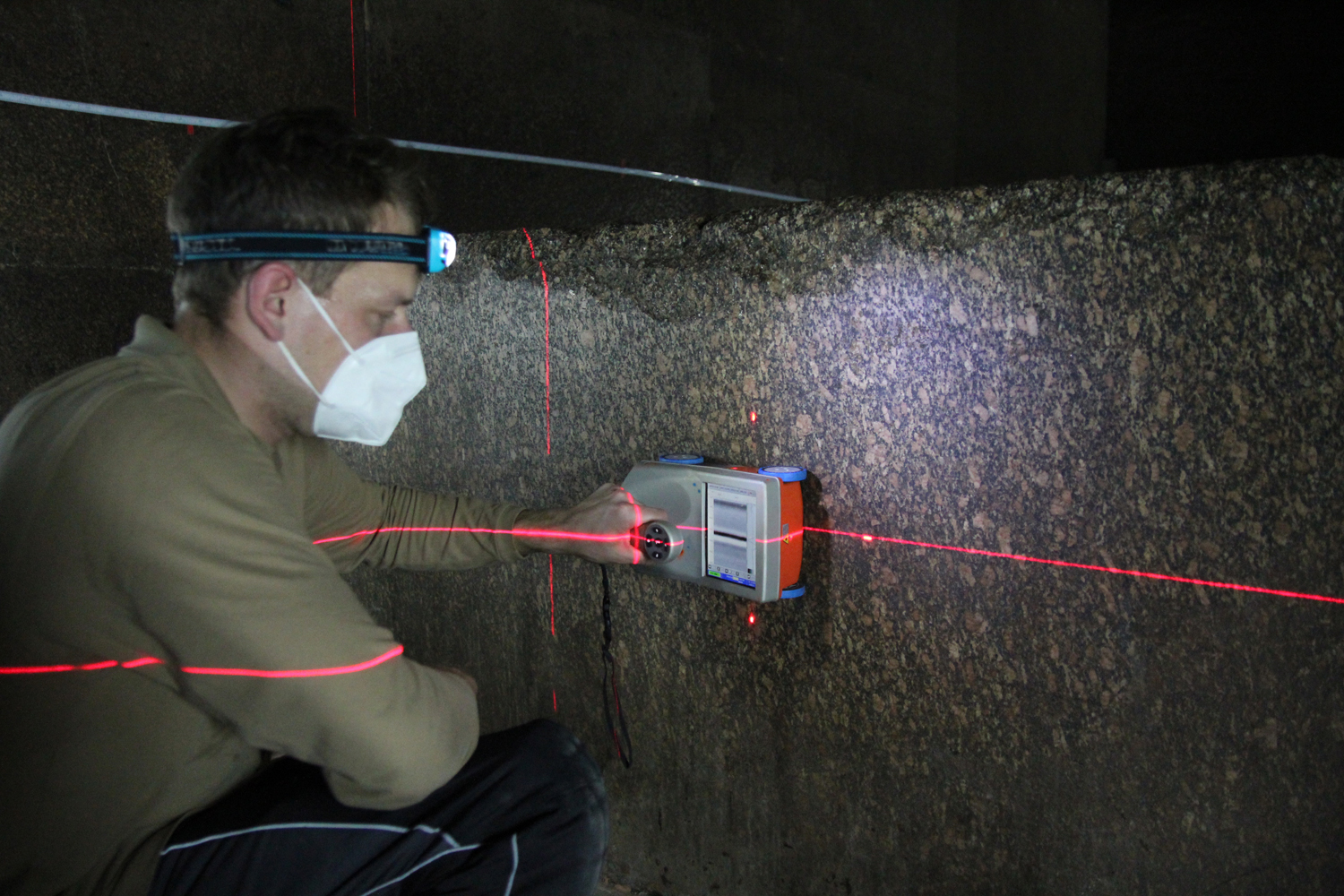
„In the garden of our hotel, the breakfast table is filled with ful, which is a paste of cooked fava beans, freshly fried falafel, and crunchy pita bread. I sit and take a look around. The Cheops Pyramid – the largest and eldest of the three pyramids of Gizeh – is located half a kilometer away, currently veiled in the morning haze. It is just before nine, I've got to go.
As every morning, we meet our Egyptian colleagues at the bottom of the pyramid in order to carry up the heavy cases with measuring instrument to the Chevron together. The formation – four stone blocks set against each other diagonally – resembles a gable roof, presumably the former entrance to the Cheops Pyramid. The blocks dissipate the loads to the side, arching over a tunnel that is supposed to be located below.
Ground penetrating radar, ultrasound, and electrical resistivity tomography
According to muon tomography measurements of the ScanPyramids Project of 2016, there is a large open space behind the stone blocks, what our Egyptian-German research team is seeking to verify by additional measurement methods. We use ground penetrating radar, ultrasound, and electrical resistivity tomography: non-destructive measurement techniques with which we are able to analyze the inner structure of the pyramid.
At the little plateau at a height of roughly 20 meters, we discuss today's measurement schedule with the research directors Prof. Christian Große and Prof. Hany Helal of the University of Cairo. Together with my colleagues Johannes Rupfle and Mohamed Elkarmoty, I want to conduct measurements in the so-called "descending corridor", a tunnel that leads to the inside of the pyramid underneath the Chevron. It is windy, and there is sand in the air.
Electromagnetic waves provide information
After a while, I don't notice much of the weather any more. The tunnel is quite steep, and it is only about one meter high. Working overhead and with joined forces, Johannes, Mohamed, and I attach the 300/800 MHz radar antenna to our self-built measuring trolley. Johannes lowers them both with a rope while I hold the antenna and the trolley from below.
Mohamed keeps track of the measurements via the monitor. The electromagnetic waves of the antenna penetrate the part of the pyramid above us, travelling at different velocities in limestone, granite, and air. The radar waves are reflected at the material interfaces, and the time they take to arrive back at the antenna tells us more about the structure of the pyramid.
Determination of air-filled cavities
Meanwhile, my colleague Polina Pugacheva attaches electrodes to the outer walls of the pyramid in order to inject a weak electrical current in the limestone. Electrical resistivity tomography allows her to see where the current flows through solid rock and where it avoids air-filled spaces. Combined, her and our measurements are supposed to give a comprehensive image of the inner structure of the pyramid.
Back to the "descending corridor": It is dark, apart from the light of our headlamps. Humid air fills the tunnel, causing us to break a sweat. In a stooped posture, we continue to work our way through the tunnel. After roughly a hundred meters, deep under the pyramid in the bedrock, there is a small horizontal passage to the Subterranean Chamber, one of three chambers in the Cheops Pyramid. We crawl on all fours, until we are finally able to stand upright again. It is a sublime feeling to be down here.
Cooperation with the Egyptian colleagues
During a measurement, the control monitor indicates that the measuring wheel of the antenna is continuously measuring a distance, despite the fact that the trolley is standing still. What could be the matter? We disassemble the apparatus and go back outside – only to find out that the plug of the cable for the distance measurement has broken. We contact the manufacturer in the United States, and it becomes clear that we have to call it a day.
In order to save the whole project, we need two new electrical resistors and a soldering station. Our Egyptian colleagues get the necessary stuff, Johannes solders plug, cable, and resistors, by which the first soldering iron blows the fuses in the hotel room. However, our interdisciplinary team masters all the challenges in the end. A test on the following day shows full functionality. We can continue.
Last surviving wonder of the ancient world
In the evening, the cooperation with our Egyptian colleagues is deepened with braised pigeon and mint lemonade. At night, lying in bed, I sometimes ask myself – after the strenuous days – why I am so lucky to be able to work here, at the only still remaining of the seven world wonders, where the people of ancient Egypt made amazing civilizing achievements thousands of years ago.
Back in Munich, I sometimes find it hard to recount what we have accomplished. When we were at the site, we planned from one day to the next, always focusing on the next task. I hardly had time to think. Now, it is up to us to sort the data, to process the results, and to interpret them. Maybe we will fly back to Cairo again with new insight soon. Luckily, I can also eat Egyptian food at home in Munich until then.“
- The Team around Johannes Scherr and Prof. Christian Große of the Chair of Non-Destructive Testing visited Egypt from November 12 to 22, 2020.
- The measurements at the Cheops Pyramid were conducted in cooperation with a team around Prof. Hany Helal of the University of Cairo, in the scope of the ScanPyramids Project.
- From the German side, the work is funded by TUM's International Graduate School of Science and Engineering (IGSSE) and the German Academic Exchange Service (Deutscher Akademischen Austauschdienst, DAAD).
- This article also appears in TUMcampus 2/2021. Read all issues of the university magazine TUMcampus online.
Technical University of Munich
- Johannes Scherr, M.Sc.
- j.scherr@tum.de
Contacts to this article:
Technical University of Munich
Prof. Dr.-Ing. habil. Dipl.-Geophys. Christian Grosse
Chair of Non-destructive Testing
Franz-Langinger-Straße 10
81245 Munich, Germany
grosse(at)tum.de
